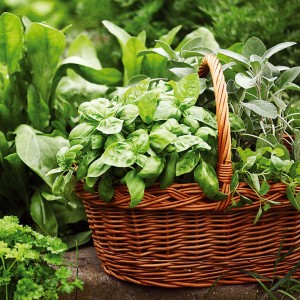Perennial plants, or simply perennials, are plants that can grow and survive in the garden for a number of years. Some species from warmer regions are only able to survive the winter by being brought inside in October and being kept there until after the last frost in late April or early May (in the northern hemisphere).
We will not focus on the wide variety of one-year and two-year wonder plants that bloom for a first or second year, shed seeds and die. They are good to grow in special flower beds, usually together with vegetables (common marigolds, French marigolds, snapdragons, Nigella arvensis). But instead, we will take you into the realm of perennials that create an environmentally friendly herb garden with minimal effort.
MAKING THE MOST OF PERENNIALS
The most popular reason for creating perennial beds is merely to create a pretty garden. Why not? In such a garden, pretty perennials aren’t the only choice, there may be edible and medicinal plants, or pollen-rich ones, or even species for dyeing.
As for aromatic herbs, they should be clustered together, ideally in a sunny place where they can easily be reached from your kitchen. Ground-covering species of perennials are suited to being planted under fruit trees, as well as under forest trees and bushes. They simply cover the ground, needing no pruning, especially when you cover them with a protective layer of organic material during the first years after planting. This will help combatting weeds and grass in order to create a lasting compact cover.
Bunched and trailing perennials can also line paths, pavements, patios or lawn edges. So you can sell the trimmer, since an ordinary lawn mower or scythe will easily cut the edges of perennials, leaving no unwanted grass in less accessible edges. There are also substantial and large perennials which can be combined with shrubs, or used separately. And don’t forget about perennials which can grow on the edges of, and in water bodies, whether in the shallows or the depths. They even help to clean the water. In order to grow, they collect nutrients and in turn starve algae. The main advantage of perennials is that they are easy to find a home for. If your garden is not big enough for trees, you can still have hundreds of species of perennials in a relatively small piece of land instead.
PROPER HABITAT
In all cases, there are two basic selection factors – putting the plant in aspecially chosen place bearing in mind area requirements, and simply considering your preference as to appearance and function. It is not a good idea to buy a plant you know nothing about, and to place it in the first aesthetically pleasing spot. With luck it may survive, but it will quite possibly not reach its full potential and may wither and die.
One can find ornamental and relatively unusual species of plants grown in peat compost substrates in stores, the store owners almost certainly knowing that customers will be lured back with their credit cards for replacements. If you are looking for durable, proven and honestly grown specimens, you first need to find out exactly what you want, and then look for specialised growers. Thanks to the Internet, this shouldn’t be difficult at all.
(…)



